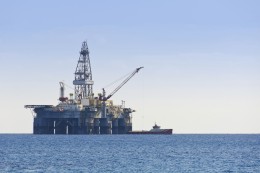In an almost complete reversal of the last Outer Continental Shelf (OCS) oil and gas (O&G) leasing program established under the Obama administration, the Department of the Interior (DOI) under President Donald Trump and Secretary Ryan Zinke is proposing to make 90 percent of the OCS available for energy development. In its 2017–2022 National OCS Oil and Gas Leasing Program, the Obama DOI put 94 percent of the OCS off limits. The new draft proposed program (DPP) would cover the period 2019 to 2024 and, according to the DOI, make 98 percent of all undiscovered and technically recoverable O&G resources in federal offshore available for consideration for future exploration and development. Forty-seven lease sales are proposed in all four OCS regions: the Gulf of Mexico, Alaska, the Atlantic, and the Pacific. The Obama DOI’s final program comprised 11 potential lease sales: 10 in the Gulf of Mexico and 1 in Alaska’s Cook Inlet. No lease sales were included for the Pacific or Atlantic OCS. The DPP excludes only the North Aleutian Basin Planning Area, which includes Bristol Bay, part of the largest sockeye salmon fishery in the world.

In a reversal of its original decision, the Trump administration announced that it would not open drilling off the coast of Florida. The decision was made following Florida Republican Governor Rick Scott’s announced opposition to the plan.
President’s strategy
The DPP is a product of the Trump administration’s America-First Offshore Energy Strategy, as outlined in the president’s April 2017 Executive Order (EO). The EO stated that it is “the policy of the United States to encourage energy exploration and production, including on the Outer Continental Shelf, in order to maintain the Nation’s position as a global energy leader and foster energy security and resilience for the benefit of the American people, while ensuring that any such activity is safe and environmentally responsible.”
Three days after the EO was issued, Zinke produced a secretarial order that called for the “enhancement of opportunities for energy exploration, leasing, and development of the OCS, establishment of regulatory certainty for OCS activities, and enhancement of conservation stewardship, thereby providing jobs, energy security, and revenue for the American people.”
Areas unexplored for decades
The intent of the DPP is to “incentivize industry to look to the shores of the United States when considering long-term investment strategies in upstream energy development.” If finalized, the DPP seeks to encourage industry to employ their “world-class geological and technical expertise to assess and evaluate America’s potential offshore oil and gas resources.”
“By not prematurely restricting or narrowing OCS areas under consideration, this DPP will allow industry the opportunity to further inform the Secretary of their interest in leasing frontier areas and to collect data in areas that have not been explored in decades, if ever,” the DPP continues. “This will, in turn, further our understanding of the resources available on the OCS to meet national energy needs.”
First part of process
Issuance of the DPP was preceded in July 2017 by a DOI Request for Information, which prompted over 800,000 public comments. The DPP is now open to a 60-day public comment period. The DOI will then issue a proposed program and a draft Environmental Impact Statement (EIS), as required by the National Environmental Policy Act (NEPA). A 90-day public comment period will apply to both of these documents. A proposed final program and a final EIS will then be submitted to the president and Congress.
According to the DOI, the DPP allows for maximum flexibility so that areas considered for leasing may be narrowed “after further environmental analysis and important input and coordination with key stakeholders.”
Western governors unified in opposition
“Eighty percent of U.S. voters support increased domestic oil and natural gas production,” said American Petroleum Institute’s Upstream Director Erik Milito. “The administration’s new offshore leasing plan will give our nation the ability to access our vital energy resources to help meet growing domestic and global demand while helping to supply affordable energy for consumers, manufacturers, and businesses.”
The DPP was opposed in a joint statement issued by the governors of the three West Coast States: California’s Jerry Brown, Oregon’s Kate Brown, and Washington’s Jay Inslee.
“This political decision to open the magnificent and beautiful Pacific Coast waters to oil and gas drilling flies in the face of decades of strong opposition on the part of Oregon, Washington and California—from Republicans and Democrats alike,” the governors stated. “They’ve chosen to forget the utter devastation of past offshore oil spills to wildlife and to the fishing, recreation and tourism industries in our states. They’ve chosen to ignore the science that tells us our climate is changing and we must reduce our dependence on fossil fuels. But we won’t forget history or ignore science.”
The DPP is here.
